Grateful for the gift of religious life
People
Proudly clutching her birthday card from Queen Elizabeth, Sr Teresa Cooper says not in her wildest dreams did she expect to reach 100.
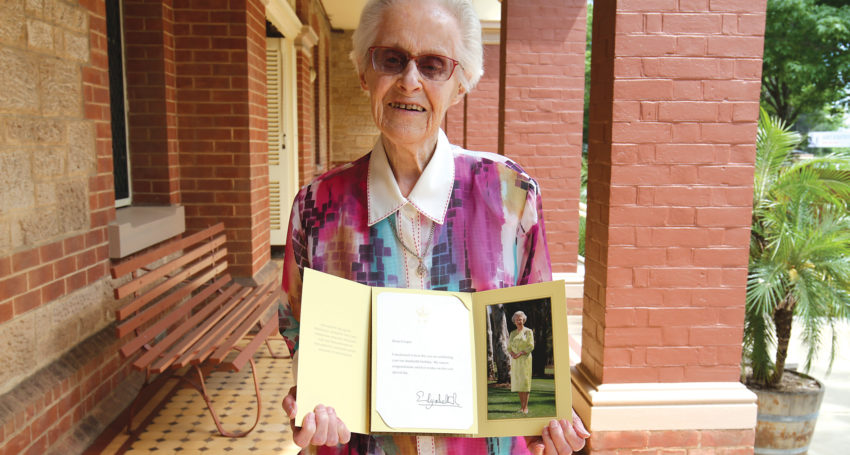
“I nearly didn’t last my birth because I was a premature baby,” she told , ahead of her special birthday celebration with family and friends on December 30.
“In those days the prem babies were put in cardboard boxes and wrapped up in cotton wool.”
Her parents’ first concern was to have their daughter baptised in case she died. The priest wasn’t home when they went there so his housekeeper performed the baptism.
Advertisement
The second eldest of Eileen and William Cooper’s seven children, Teresa lived on the family farm at Koppio, 32km from Port Lincoln. At the age of eight she went to board at St Joseph’s Convent in Port Lincoln.
“I don’t think I was scared,” Sr Teresa said of her boarding school experience.
“I don’t even remember being homesick.
“The Sisters were so good to the little ones, especially Sr Gemma (her Year 2 teacher).”
Teresa went home for a few years during the Depression when her parents couldn’t afford the school fees but returned to complete her Intermediate at the Port Lincoln school. By then her family had moved to a farm at Marrabel in the Mid-North.
Teresa joined them and spent the next three years helping her mother look after the five younger children.
When World War II broke out she decided to help the war effort and went to Adelaide to be a nurse.
She “semi-trained” at the Monreith General Hospital on Portrush Road and became adept at working across maternity, surgery and general medicine at a time when many trained nurses were serving in the forces.
After four years she returned to Marrabel and was “having a good time” attending dances, playing sport and, of course, enjoying the highlight of the year, the rodeo.
“We used to get 10,000 people there back then,” she said.
“I was planning to get married, I had no idea of becoming a nun.”
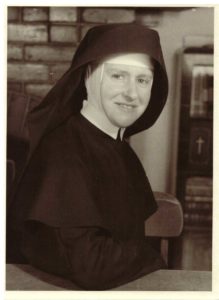
At the back of her mind she knew getting married wasn’t what she really should be doing. A missionary priest came to town and “hit me with a jolt when he said I think you have a religious vocation”.
I said, “I just have to do this and answer God’s call”.
Her younger sister Dorothea, who went to school at Cabra, had already joined the Dominican Sisters but Teresa only had eyes for the Sisters of St Joseph.
She was about 28 by the time she began her journey at Kensington convent.
Teresa started religious life as a postulant in Penola “dressed in a black dress and a little black cap”. She realised “how important it was to be walking in Mary MacKillop’s footsteps”.
Advertisement
“I loved my time there in community with three Sisters who initiated me into Josephite life.”
At the end of that year Teresa and five other SA postulants joined a group of 50 or so novices in the novitiate at Mount Street, North Sydney.
“Now we were truly in Mary MacKillop’s company as we prayed near her tomb in the chapel every day.”
She was professed as Sr Mary Paul on January 6 1952 and her first appointment was to a small country school in northern NSW called Dungowan. There was only one other Sister at this small town near Tamworth and this was another new experience for her.
“I’d never lived in a twosome, having come from a big family and then having company in the novitiate. However, I survived with Mary MacKillop’s and God’s help,” she said.
After four years she arrived back in SA and was sent to Nangwarry, in the South East, to open a new school to cater for migrant families working in the burgeoning forest industry.
For the next 32 years she taught in city and country schools including Tailem Bend, Burra, Berri and Renmark. Initially she took music lessons as well as teaching in the classroom but teaching music became her full-time ministry from 1962 and she successfully prepared many young students for their music exams and trained choirs for school concerts and the occasional Eisteddfod.
The changes that came with Vatican II not only enabled Sr Teresa to join other Religious women in gradually shedding their habits, it also gave her the opportunity to follow new ministries such as chaplaincy to the sick and dying.
A regular visitor to the Home for Incurables at Fullarton while living in Adelaide, she pursued her natural aptitude and interest in pastoral care after undertaking a course in clinical pastoral education in Sydney at the age of 68. Returning to Adelaide, she spent the next 12 years as an integral member of the Hectorville parish community as a chaplain to the local hospital and aged care homes as well as visiting the sick and elderly in their homes.
“This was Mary MacKillop’s work, it was so rewarding – the people gave so much more to me than I could ever have given them,” she said.
She set up a network of parishioners to assist her in this ministry and made a lasting impact before retiring at the age of 80.
Sr Teresa is grateful to have “been around” for the canonisation of Mary MacKillop in Rome, even if she was confined to Kensington because of her age. “It was such a joyful time,” she recalled.
She was also pleased to be present with several other senior members of the older Sisters when the statue of Mary MacKillop was unveiled by Archbishop Philip Wilson in 2009.
Slight in stature, Sr Teresa admitted that she has had a few falls in recent years, with broken bones resulting, but she has got through them and puts down her longevity to being raised on a farm under the guidance of loving, caring parents.
“It was a very healthy life, you had your own milk, eggs and meat, and lots of fresh air around you,” she said.
As for her calling to religious life, she insisted she would “do it all again”.
“I am very grateful and thankful that I answered God’s call and became a Josephite,” she said.
“There’s no greater gift I could say that God has given me.”



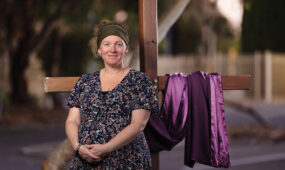
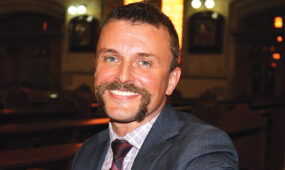
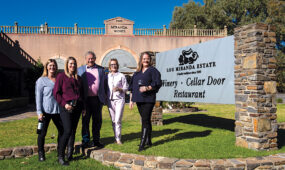
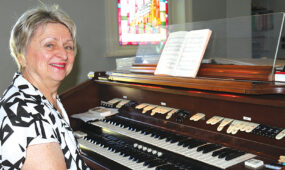

Comments
Show comments Hide comments